 Petzlover
Petzlover Renascence Bulldogge is originated from United States but Shikoku is originated from Japan. Renascence Bulldogge may grow 29 cm / 12 inches higher than Shikoku. Renascence Bulldogge may weigh 12 kg / 26 pounds lesser than Shikoku. Both Renascence Bulldogge and Shikoku has same life span. Both Renascence Bulldogge and Shikoku has almost same litter size. Renascence Bulldogge requires Low Maintenance. But Shikoku requires Moderate Maintenance
Renascence Bulldogge is originated from United States but Shikoku is originated from Japan. Renascence Bulldogge may grow 29 cm / 12 inches higher than Shikoku. Renascence Bulldogge may weigh 12 kg / 26 pounds lesser than Shikoku. Both Renascence Bulldogge and Shikoku has same life span. Both Renascence Bulldogge and Shikoku has almost same litter size. Renascence Bulldogge requires Low Maintenance. But Shikoku requires Moderate Maintenance
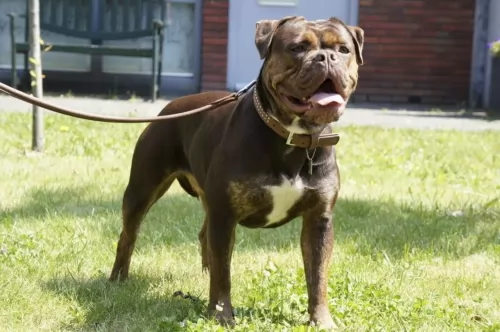 The Renascence Bulldogge, sometimes referred to as the Gargoyle – or Guardian bulldogs, came about by crossing the American Bulldogs with Bullmastiffs, Bandogges, English Bulldogs and Hermes Bulldogges.
The Renascence Bulldogge, sometimes referred to as the Gargoyle – or Guardian bulldogs, came about by crossing the American Bulldogs with Bullmastiffs, Bandogges, English Bulldogs and Hermes Bulldogges.
The idea was to re-create the working British Bulldogge breed of the 1800's. The Renascence Bulldogge is bred to a standard and is a rare dog. The idea was to bring about a dog like the English Bulldog but with less health problems.
There is a Renascence Bulldogge Kennel Club in existence.
 The Shikoku is from the Shikoku Island in Japan and they are very much like the Japanese Shiba Inu. There are six native Japanese dog breeds and the Shikoku is medium sized and sits in between the smaller Shiba Inu and the very large Akita Inu. All of the Japanese native breeds are members of the Spitz family. The Japanese have sorted their six breeds into 3 categories by size. Being medium size, the Shikoku is a member of the Shika-inus group. Others in this group are the Ainu Ken, the Kai Ken and the Kishu Inu. There are small differences between the three dogs in the Shika-inus group.
The Shikoku is from the Shikoku Island in Japan and they are very much like the Japanese Shiba Inu. There are six native Japanese dog breeds and the Shikoku is medium sized and sits in between the smaller Shiba Inu and the very large Akita Inu. All of the Japanese native breeds are members of the Spitz family. The Japanese have sorted their six breeds into 3 categories by size. Being medium size, the Shikoku is a member of the Shika-inus group. Others in this group are the Ainu Ken, the Kai Ken and the Kishu Inu. There are small differences between the three dogs in the Shika-inus group.
The Shikoku was bred to be a hunting dog in Kochi Prefecture to hunt boar and deer. Other names for the breed include Kochi-ken and Kishu dog or boar hound. This dog is considered to be the purest of the Japanese native dogs or Nihoken. They are today very , very rare. There are very few outsides of Japan, but some in North America are attempting to save the breed.
The are od Kochi Prefecture is a mountainous region with rough terrain that anyone outside of the area would have a hard time accessing. That is why the Shikoku is considered to be so pure as they were pretty well isolated in the mountains. The breeders were also isolated by the mountains and there was very little interbreeding. Although breeding the same dog, these different groups developed different lines of the Shikoku.
Documentation tells us that the number of originals lines was just two and these were the Western and Eastern Shikoku. The Western dog was known as the Mount Ishizuchi Shikoku and the Eastern as the Mount Tsurugi Shikoku. Within these two lines of Shikoku there are additional strains.
Within the Eastern line there is the Tokushima (lya) and the Koci-Aki strains. Within the Western line there is the Hata Uwahara, the Ehime-ken Shuso-gun and the Honkawa. Among these lines and strains, there are different coats and different colors; some heavier and some taller, but all figure into the development of the breed.
Finally, in the Showa Era the Japanese established the Dog Protective League and they began collecting the native dogs from around the country. They protected them so that the breed will go on. The Shikoku is today recognized as Foundation Stock by the AKC and it is fully recognized by the Japan Kennel Club, the Canadian Hound Club and the Shikoku has been declared a living Japanese “natural monument”.
Two bloodlines became the way the Shikoku were know after the war – the Honkawa and the Hata lines The Honkawa line were the descendants of the Choshun-go and the Hata line were the descendants of the Matsukaze-go. They bred the lines separately until 1955, when they mixed them to make the breed stronger. They are no longer considered separate in any way.
Because they are such primitive dogs, the Shikoku are good watch dogs and quite reserved with strangers. They need a lot of socialization to be a family pet but once they are, they make great companions. Intelligent, quick to learn and eager to please. Of the two lines of Shikoku dogs from the Western strains, the current Shikoku owes much of its current development to the Honkawa and Hata strains.
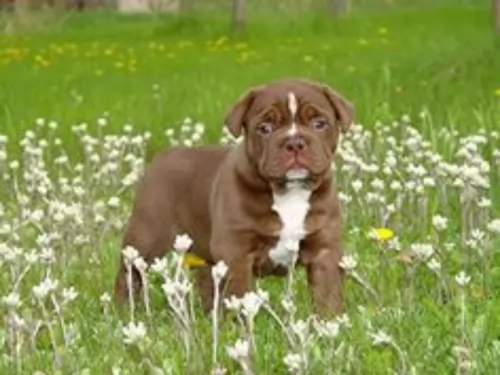 The Renascence Bulldogge is a well proportioned, muscular, medium sized dog with a large head and strong neck.
The Renascence Bulldogge is a well proportioned, muscular, medium sized dog with a large head and strong neck.
He can weigh between 27 to 41 kilograms and stand at between 43 and 56cm. A dock tailed is the preferred look, giving the dog a nice compact, distinguished look, but these days the tail is left to grow long. The coat is short and smooth and the colors are fawn, white and black. The eyes of the dog are low and wide, the muzzle broad and the ears are high set and semi-erect, semi-floppy. The back legs are muscular and heavy, quite a bit longer than the front legs.
Protective and territorial, the Renascence Bulldogge happens to also be a friendly, social, playful dog wih his human family. He tends to be a bit reserved and wary around strangers.
This powerful Molosser is also easy to train, and with training and socialization he becomes a pleasure to have around – obedient and well mannered.
 Today’s Shikoku is a medium sized breed with a Spitz like body – square with a head that is wedge shaped. The ears are pointed, and the tail is curved and feathered. They have arched toes and hard pads with dark, hard nails.
Today’s Shikoku is a medium sized breed with a Spitz like body – square with a head that is wedge shaped. The ears are pointed, and the tail is curved and feathered. They have arched toes and hard pads with dark, hard nails.
The two lines of the Shikoku are slightly different in built and look. The Honkawa strain is slender and athletic; agile and single coated. They have dark eyes and most of them are black and tan.
On the other hand, the Hata strain is much heavier boned, with the front more muscular than the rear. They have small ears, a wide skull and a strong undercoat. His eyes are shaped differently than the Honkawa. Their coats are also mostly red and tan.
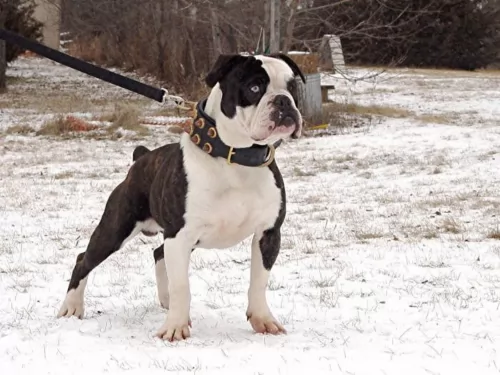 The Renascence Bulldogge is a rare dog and they are now being bred more often by people who love the English Bulldog but who don't want so many health problems.
The Renascence Bulldogge is a rare dog and they are now being bred more often by people who love the English Bulldog but who don't want so many health problems.
The Renaissance Bulldog is a lot more healthier and more robust than the English Bulldog. The best part is that he has the English Bulldog's characteristic look. Bring him into your home and you’ll have an entertaining, social, playful, loving pet and companion.
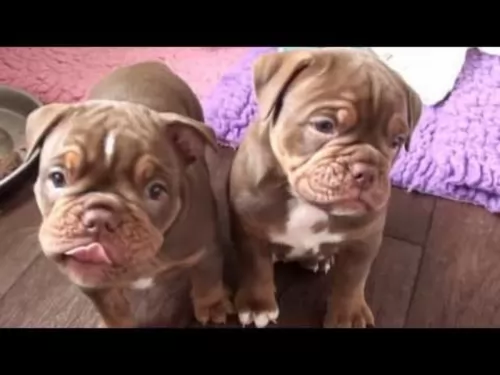 Your Renascence Bulldogge can live to be anything from 10 to 15 years of age with good care.
Your Renascence Bulldogge can live to be anything from 10 to 15 years of age with good care.
Heat stroke is a concern with the Renascence Bulldogge, and even with his daily walk, you will have to keep an eye on him You must never ever leave him alone in a hot car. These dogs have breathing problems as it is and overheating can kill him.Suffering from heatstroke is regarded as an emergency situation.
Any dog can suffer with bloat, not only the Renascence Bulldog. If your dog’s stomach is bloated, he will have a hard, swollen stomach, he will be restless and trying to vomit. This is also a life threatening condition.
Also referred to as canine atopic dermatitis, the Renascence Bulldog sometimes has to contend with this non-parasitic infection. Your poor dog will have dry, itchy skin and he can become frantic with this. You will need to get him to the vet.
Other things to look out for with your Bulldogge are hip dysplasia, cancer and eye infections.
 Being isolated as they were, the Shikoku was a fairly healthy breed, no genetic testing has been done. Despite this they suffer a few of the same potential issues as other breeds their size.
Being isolated as they were, the Shikoku was a fairly healthy breed, no genetic testing has been done. Despite this they suffer a few of the same potential issues as other breeds their size.
Otherwise this is an agile and hardy breed with no known congenital health issues.
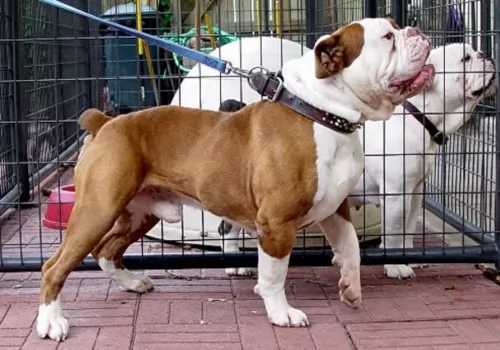 Your Renascence Bulldogge is a special, loving pet, but keeping him healthy can be a bit of a challenge.
Your Renascence Bulldogge is a special, loving pet, but keeping him healthy can be a bit of a challenge.
A walk every day will be a good form of exercise for this dog.
Your pet is one of these dogs that has quite a few layers around the face.You will need to wipe between these folds with a damp,warm cloth or with a natural,gentle anti-fungal wipe.
His skin can become irritated with the layers of skin and you don’t want such a cute pet to battle with a itchy rash on his skin.
Your Renascence Bulldogge is going to need the very best food you can give him. The commercially manufactured foods are nice and convenient and the best ones are well balanced.
It’s nice to be able to give your Bulldogge some delicious home-made food, bearing in mind that dogs like simplicity and consistency.
Boiled chicken, brown rice or pasta and sweet potatoes, spinach and carrots all chopped up and added to your dog’s dry kibble twice a week will delight him. It will ensure he is healthy ad happy. A little bit of raw meat can also do wonders for his health. Never leave him without a constant supply of fresh, cool water.
 Feeding the puppy Be careful with feeding the puppy and adult as the breed is known to have a tendency toward obesity. Fresh food is better as it is what the breed has been used to, but a high quality puppy kibble is acceptable. Feed three times per day.
Feeding the puppy Be careful with feeding the puppy and adult as the breed is known to have a tendency toward obesity. Fresh food is better as it is what the breed has been used to, but a high quality puppy kibble is acceptable. Feed three times per day.
2.Feeding the adult He is a high energy dog so feed a high energy food designed for a medium sized dog. Feed in two meals each day.
4. Games and Exercises You will need a fenced yard for this breed and time to play with them. If not, you would need time to walk her more than once a day. They love to play indoors as well, chasing balls, learning new things. The breed make great companions for hiking, swimming, play frisbee or catch outside. They do well at agility, rally, obedience and flyball.